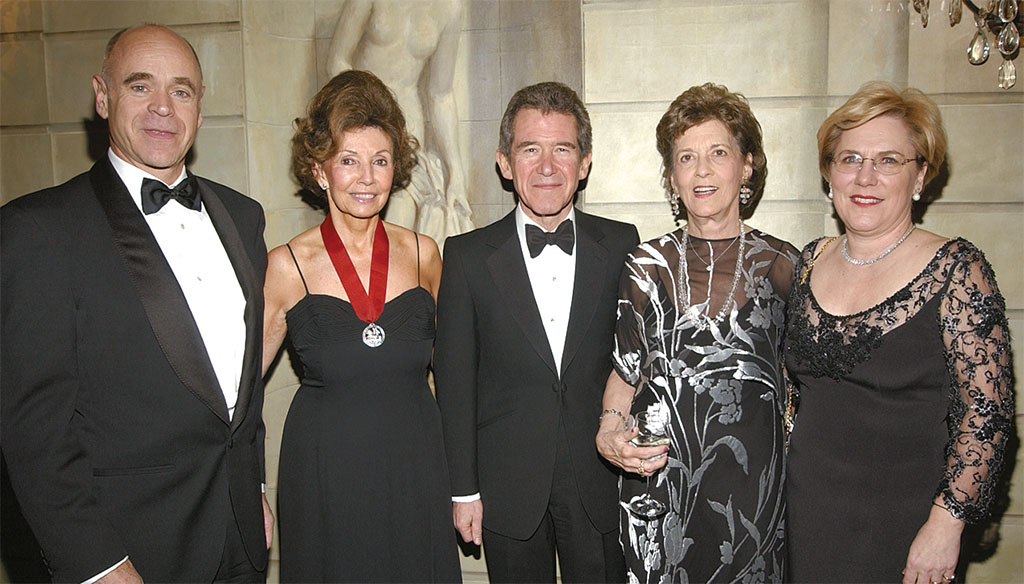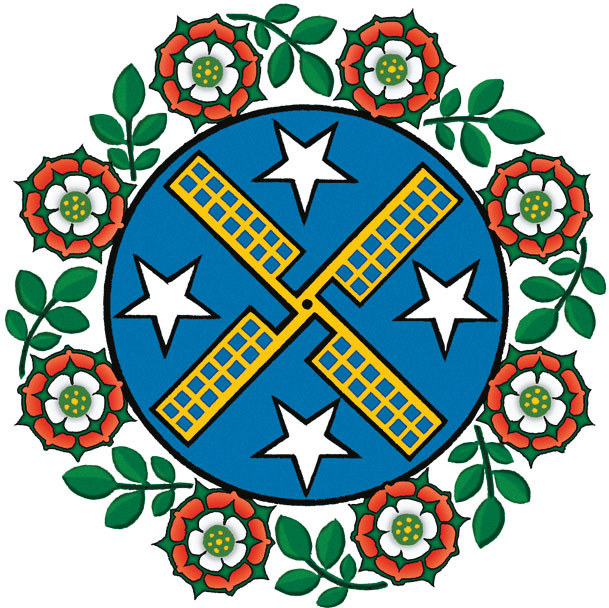
[caption id="HandsAcrosstheSea_img1" align="aligncenter" width="1024"]

Courtesy of the St. George’s Society, N.Y
[caption id="HandsAcrosstheSea_img2" align="aligncenter" width="609"]

Courtesy of the St. George’s Society, N.Y
IN AN ERA WHEN IT IS POLITICALLY fashionable to turn to the government to deal with matters of social welfare, it becomes easy to overlook the quiet work of historic benevolent societies that immigrant groups have always formed when coming to these shores. Perhaps the oldest such society in the country is the St. George’s Society of New York. When colonial England’s control on the provinces began to unravel in the years that led up to American independence, Englishmen in New York came together to provide material assistance to their fellow countrymen. Now, 235 years later, this private charitable organization remains dedicated to the purpose for which it was founded: to assist men and women from the United Kingdom and Commonwealth who find themselves in need, trouble, sickness or other adversity in the New York area.
As a part of our continuing series “Hands Across the Sea,” I sat down with John Shannon, executive director and almoner of the St. George’s Society of New York, and society President Natalie Pray in their offices at 16 East 46th St., Manhattan. Each of them shares a genuine enthusiasm for the benevolent work and the fraternal ties that the society fosters. It was the weekend of the annual English Ball, held this year at the Pierre Hotel. This elegant soiree is the social highlight of the year for the St. George’s Society. More important, the evening is the organization’s largest fund-raising event in support of its charitable work. Despite the bustle in the society’s office, they were delighted to visit with British Heritage.
Founded in Fraunces Tavern, New York City, on St. George’s Day, April 23, 1770, the society was a gathering of Englishmen who banded together to “aid brethren in distress.” During the War for Independence, some of its members repatriated to England, some located in Nova Scotia, while others remained in New York. They were Loyalists who counted themselves Englishmen, before and after the war. They continued to meet through the war years on St. George’s Day and to begin an active mission to aid fellow Englishmen in the colony. “Those Englishmen thought they should hang together or they’d hang separately,” quips Pray, the first woman to serve as the society’s president. The first president of the society, Goldsborough Banyer, was secretary of state in the colonial government. Needless to say, his political and public career ended with the end of British rule in New York.
From the beginning, the rules of the society admitted “no person who is not an Englishman, or the descendent of an Englishman.” Says Pray, “The society has had some evolution since then. It wasn’t until 1988 that women were admitted as members. The man who worked very hard to get that through (because there was a lot of objection) was Colton Wagner, society president in 1987-88. The queen gave him an MBE for that.” These days, members may indeed still be subjects or descendents of Britain and the Commonwealth, but those with any British affiliation are welcomed to apply.
Executive Director Shannon has been with the society for 10 years. He is excited about his work. “I’ve always been an Anglophile,” Shannon confesses. “It’s a perfect job. I love the Englishness. I love helping people who need help. We have great relations with the consul-general and the other British societies. It’s the most English job you could get in New York. For a guy who always wanted to work in London, I’ve been pretty lucky!”
Pray is equally enthusiastic about her own role in the society’s work. “I am Australian by birth, and began my career in the Australian Foreign Service,” she explains. “I came here to the U.N. and spent 30 years as a career diplomat. Now, I think I’m busier as a volunteer than I was as a professional. Like John, I just love it; it’s part of my own culture. Being president doesn’t mean very much; it’s the work and not the title that’s important. It’s what we do that counts. We have a great team of volunteers.º
It is the vigorous and diverse charitable program of the society that is still the organization’s raison d’être. At the program’s core, it provides regular financial assistance to needy senior citizens of UK and Commonwealth origin in the tri-state area of New York, New Jersey and Connecticut. It also provides financial aid to people of all ages in emergency situations, and to British travelers in the United States who face accident or illness, or find themselves victims of crime. The society’s own social worker directs an advocacy program assisting clients in such areas as applying for public aid entitlements, hospitalization and post-hospitalization care, and short-term individual and family counseling. Finally, the society maintains two beautiful cemetery plots, where men and women without funds have been laid to rest for over 100 years.
“Currently, we are regularly supporting 70 clients and providing many kinds of aid to British and Commonwealth citizens,” Pray says. “American and British corporations are very generous in their support for the society’s work. Our biggest single fund-raising event, though, is the English Ball.”
“We have the event as close to St. George’s Day as possible,” Shannon explains, “holding to the tradition which the founding members began. In practice that usually means the closest Friday.”
Each year at the English Ball, the St. George’s Society awards its prestigious Medal of Honour. This year’s recipient was Lord Browne of Madingley, group chief executive of British Petroleum. Lord Browne was recognized for his broad contributions to philanthropic causes here and abroad. This year the English Ball raised $350,000 for the society’s charitable endeavors. In addition to the annual St. George’s Day fete, the society offers a number of social events for its membership throughout the year. That its principal goal is benevolent work, however, is never far from the surface.
The title of almoner for the society’s CEO seems anachronistic. “When I was hired as executive director,” Shannon explains, “they wanted to retain the traditional title given the first full-time employee of the society in the 19th century. It was probably a very old-fashioned term even then.
“It’s actually quite helpful,” he adds. “Few people today recognize the word. Explaining that it means a ‘giver of alms’ offers me a chance to explain the work of the society.”
“One challenge we would like to address,” Pray says, “is to reach out to the larger community out there of British and Anglophiles and bring them on board.” Admittedly, “out there” is the metropolitan New York City area, where some 85 percent of the society’s members reside. For British Heritage readers in the neighborhood of the Big Apple, however, the St. George’s Society would be delighted to have you join them. It is an opportunity to be involved in a historic charitable society and engage in a substantial way our hands across the sea. Web site: www.stgeorgessociety.org





Comments